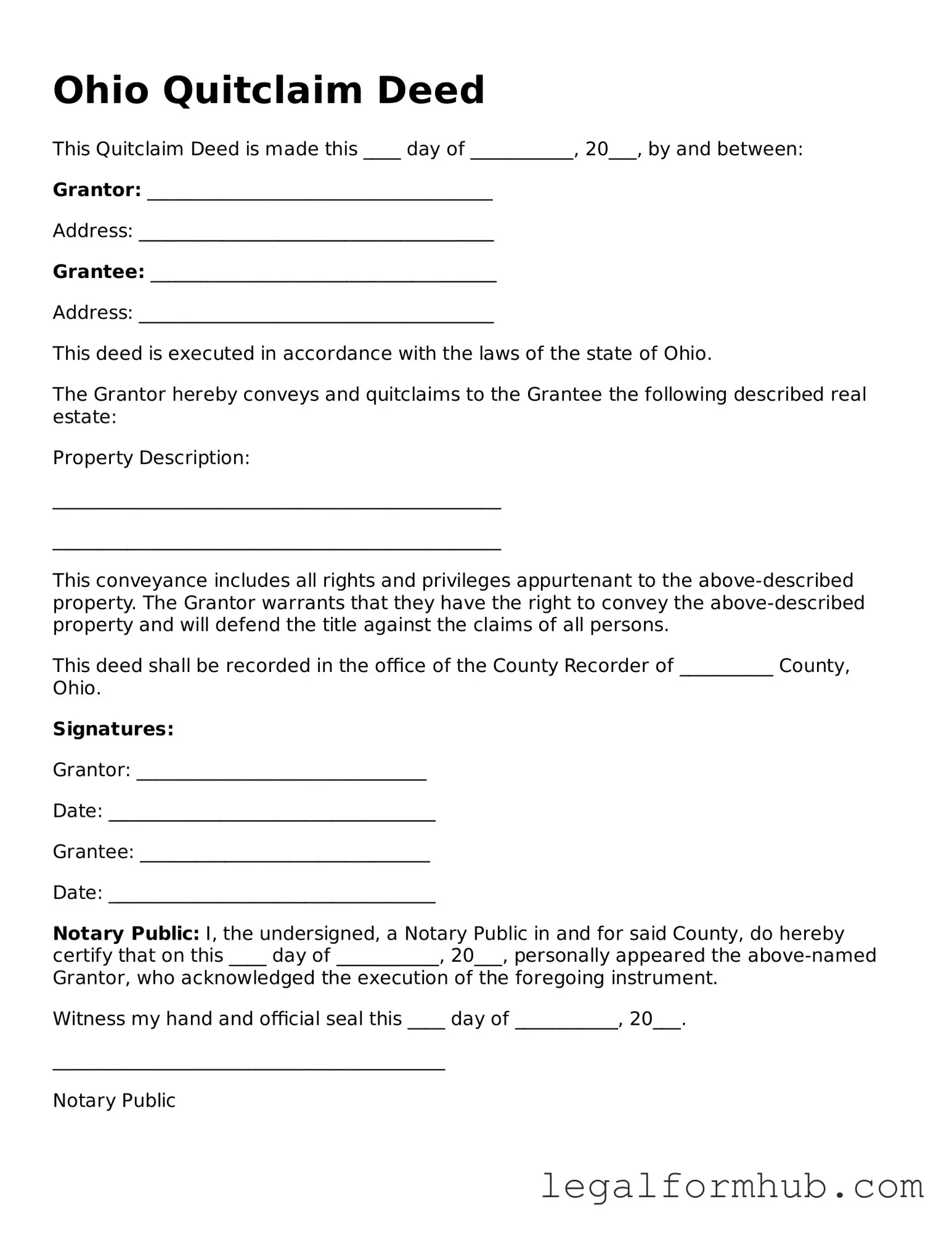Free Quitclaim Deed Template for Ohio
A Quitclaim Deed is a legal document used to transfer ownership of real estate from one party to another without any warranties or guarantees regarding the property’s title. This form is particularly useful in situations where the grantor does not wish to assume any liability for potential claims against the property. Understanding how to properly utilize the Ohio Quitclaim Deed form can simplify property transfers and clarify ownership rights.
Open Quitclaim Deed Editor Here
